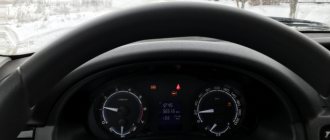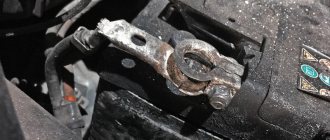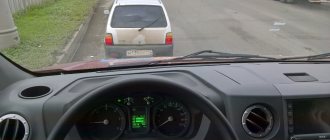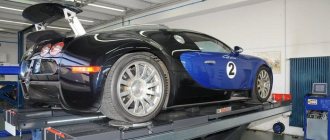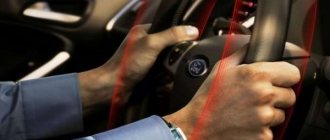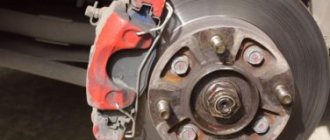Replacing bearings is not always associated with failure. Often the need for replacement arises due to natural wear and tear. Premature failure occurs due to improper oil supply and improper handling. The danger comes from scale, sand, and metal shavings that get into the lubricant. Failure is a consequence of improper handling and interruptions in the supply of lubricant. It is especially dangerous if scale, metal shavings or sand get into the lubricant. This leads to rapid wear of the bearing working surfaces and disruption of its performance.
Replacement due to failure is required under high loads, poor seals, insufficient operating clearance, overheating, melting of bearing parts and cracking. For multi-support shafts, a typical cause of failure is a violation of the alignment of the supports and shaft journals. The cause of the breakdown may be the passage of electric current through the bearing.
Main causes of failure
Most often, the reasons are related to violations of operating rules and their consequences. Timely identification of the true cause of the failure will allow you to avoid problems with the operation of bearings in the future.
Common causes of malfunction:
- Insufficient lubrication and rapid warm-up. The bearing assembly starts with insufficient oil supply. The cause can be determined visually upon inspection - the surfaces are polished to a shine, worn out, and after starting they acquire a bluish-brown tint. The problem can be corrected with sufficient lubrication and timely inspection of the seals.
- The bearing ring rotates relative to the housing or shaft. Mechanical scuffs appear on the outer surface and the color changes. The solution to the problem is to increase the tension to a level that prevents movement in the fit.
- Ingress of water and other corrosive substances, leading to the formation of shells on the surface. Corrosion can be visually identified by the presence of gray-black stripes across the raceways. The solution to the problem is to check the condition of the seals and use a lubricant with high anti-corrosion characteristics.
- Fitting with a gap, the presence of errors in the shape of the seats causes contact corrosion. Visually, fretting corrosion is manifested by the formation of rust on the surface of the rings, and there are pronounced rolling marks. The issue is resolved by impeccable landing conditions.
- Installation on a non-flat base results in deviation from the round seating surface. Chipping occurs on diametrically opposite sections of the rings, and there are obvious signs of rolling. To fix the problem, you will need to make a new shaft or housing.
- Improper handling, impacts on the ring, mechanical damage (cracks and chips).
The causes of failure may be improper design of the bearing assembly, uneven load distribution, increased edge load, incompatibility of materials from which the bearings and shaft are made, etc.
Why do bearing seats sag?
I think many have seen the unconscious cries of “Yes, these hubs are rubbish, the bearings will soon be hanging out in them!” Such school nonsense is heard every day and constantly, with or without reason.
So, we will talk about the seats of the wheel bearings and why the seats sag.
The first reason, independent of the owner, is the original quality of the materials from which the hub is made.
For example, let's take CNC hubs and a regular standard hub for budget pit bikes for comparison.
The first is made of solid milled aluminum, while the second often consists of pressed chips, which are deformed under the influence of impacts transmitted from the moving surface.
The second reason - mixed - is wheel bearings. It is mixed in the sense that it depends both on the quality of the installed bearings and on the laziness of the owner to monitor their condition.
If you install cheap bearings, they will either quickly fall apart and begin to beat, or even when new they will have a runout that is unacceptable for use in principle. Naturally, all the impacts will be transmitted to the hub, and any metal will be deformed by the impact, so that’s the subsidence.
Well, the owner is to blame in two cases: installing cheap bearings and untimely replacement of the bearing, it’s simple.
The third reason is an overtightened drive chain. It puts a large load on one side of the wheel, and accordingly, uneven distribution of loads leads to beating, accelerated wear, impacts - and that’s it, the landing sag.
BUT ALL THIS IS NOTHING compared to the main reason - HANDMADE!)))
There is simply a realm of engineering idiocy here.
So, the first chapter is knocking out bearings with a screwdriver and a sledgehammer when it’s cold! This is exactly what every schoolchild loves. After he does this, microns of metal are removed by a bearing coming out crookedly, but this is nonsense. They also don’t hit in a circle, knocking out the bearing evenly, but instead hit at one point. In this case, the bearing rests on one side, sinks the hubs, and even removes the necessary microns with its edge!
Let's say some people think that heating the metal is not necessary, and that an anchor puller is enough. Even so, the bearing will at least move evenly, but it will be tight, and microns will still be eaten away, and this is not good. But why do you need pullers and hair dryers? There is a screwdriver and a sledgehammer!
But in fact, if you want the bearing seats and the hub as a whole to serve you happily ever after, then remember:
1) Monitor the chain tension
2) Monitor the condition of the bearings!
3) Timely replacement of bearings
4) Use of quality bearings
5) When replacing bearings, use a hair dryer AT A MINIMUM! And it's best that you have an anchor puller.
Negative factors that reduce service life
The service life can be reduced due to insufficient lubrication, poor-quality lubrication in components, overheating, seal failure and the ingress of foreign substances and particles.
The first symptoms of fatigue can be recognized at high speeds, high loads and problems with lubrication. Natural fatigue occurs under variable shear stresses in the subsurface layers of the raceways. The resulting cracks propagate further towards the surface, and the material of the part breaks off. The bearing is more likely to fail if operating conditions deteriorate - a decrease in the quality/change of the type of lubricants, a change in the operating conditions of the lubrication system, an increase in the rotation speed and load on the bearing. It will work longer if the load standards, quality and quantity of lubricant, protection from abrasive substances and aggressive environments are met.
As a preventive measure, replacement is carried out without waiting for complete destruction, if increasing vibration and noise are detected during operation.
Roller bearing failures
| Table of contents |
| Roller bearing failures |
| Disassembly |
| Repair |
Page 1 of 3
Many factors can contribute to the occurrence of roller bearing malfunctions: design flaws and poor quality of bearings, improper installation of axle boxes, poor quality, insufficient or excessive amount of lubricant, foreign matter entering the axle box, improper assembly of bogies, excessive longitudinal and axial loads, dynamic blows. The main damage that leads to excessive heating of axle boxes, and then to complete destruction of bearings, are ruptures of the inner ring and chips of its sides, loosening of the fit of the inner rings, fractures of the cages, and weakening of the end fastening.
Ruptures of the inner rings and chips (splits) of their sides occur in a cold state and largely depend on the presence of large internal stresses in the rings that arose during manufacturing.
This mainly happens with rings made of volumetric hardening steel, for example, grade ШХ15СГ.
This steel is highly brittle and sensitive to various surface stress concentrators. Risks from turning, microburns during grinding, contact fatigue spalling lead to the emergence and development of cracks, which is facilitated by residual stresses after quenching and tempering. Rings made of ShKh4 steel with regulated hardenability break much less frequently. Cracks and ruptures of the inner rings can be caused by electrical burns, roller distortions, and chips of the roller ends, which cause these distortions.
Electrical burns occur due to improper grounding of the electric wire when performing welding work on the car, as well as due to the passage of reverse current through the axle boxes from the electric heating system of the cars when they are powered from stationary installations with a voltage of 3000 V in the parking lot.
Ring ruptures cause jamming of the bearing rollers. This is also caused by the contact of bead fragments with the raceway and insufficient radial clearance allowed during installation, which decreases even more during operating heating. Loosening (rotation) of the inner ring occurs as a result of incorrect selection of the landing tension.
If there is an oil layer between the ring and the journal, then for some period of time the ring operates similarly to a plain bearing. When friction conditions are created without lubrication, the bearing parts and the axle journal quickly heat up and become damaged.
They are covered with scale and melted by the brass of the separator. As a result, scuffs appear, cracks and chips occur. Fatigue failures of separators and fractures due to violations of manufacturing and installation technology usually occur during the period of greatest vertical dynamic loads (winter and spring seasons) and in the first months of operation.
It has been established that stress concentrators are formed in the form of tails of hot cracks in the corners of the separator windows. When the cage breaks, its pieces break off and melt, and the rollers begin to slip along the raceway. Sliders appear on the roller generatrix and scuff marks on their ends. Scoring occurs on the raceway and ring flanges. The same phenomenon occurs when the axial clearance is insufficient.
Previous — Next >>
Troubleshooting methods
By measuring vibration levels and monitoring noise levels, wear can be detected at an early stage. Vibration monitoring using special metering devices determines the degree of wear and diagnoses the need for replacement.
A signal for impending failure of wheel bearings is the appearance of low-frequency noise in the wheel area. Over time, the noise becomes stronger and after some time turns into a hum. You can independently diagnose wheel bearing failure by simply observing the noise that appears at a speed of about 40 km/h. When turning in the direction opposite to the fault, the load becomes greater and the noise increases. Turning towards the bad bearing will reduce the load and the noise will become quieter. The front wheel hub bearing is damaged more often. The reason is that strong impacts of the wheel on road obstacles cause destruction of the separator.
Another diagnostic option is to spin the raised wheel and check the play. Rotation of a wheel with a faulty part will result in noise and wheel play.
A selection of videos about faulty bearings and their diagnosis:
Symptoms of malfunction and diagnosis: how to check the front or rear wheel bearing
As a rule, wheel bearings “run” on average about 100 thousand km. However, driving on bad roads, high loads and aggressive use of the vehicle can lead to the fact that these elements require replacement by 50-60 thousand km. mileage
Also, rapid failure of the part is caused by the installation of non-original spare parts of medium and low quality, poor lubrication and seal failures, installation errors and strong tension during landing.
By the way, the front wheel bearings are often the first to fail, since the load on them is greater due to the fact that the wheels are steered and rotated, that is, the bearing is loaded at different angles.
The main sign of incipient problems with the wheel bearing is that while driving you can hear a characteristic low-frequency hum. At the same time, it is often difficult to diagnose a faulty wheel bearing by ear. More precisely, it may seem that the front wheel bearing is humming, while a detailed check reveals problems with the hub on the rear axle.
In any case, the problem cannot be ignored, especially if the noise intensifies. It is important to understand that the wear of the wheel hub bearing will eventually change from a hum to a crunching sound, after which the bearing will collapse and the wheel hub will jam.
We also recommend reading the article about what a silent block is in a car suspension device and what it is intended for. From this article you will learn about the structure of the silent block, as well as the signs of malfunctions of this element and the features of its replacement.
In turn, jamming will lead to breakage of the ball joint, deformation of the suspension arm, axle shaft, etc. If the wheel bearing seizes at high speed, this can cause serious car damage and accidents.
- So, if you suspect that there are problems with the hub, you need to know how to check the wheel bearing. The primary test to determine the condition of the wheel bearings is when driving around corners.
If it’s simple, for example, when turning left, the body rolls to the right, the load on the right wheel increases, and the left one is unloaded. It turns out that if you turn your car sharply to the left at a speed of 15 km/h, and the hum disappears, then the left wheel bearing may be faulty. If the hum disappears when you turn the steering wheel to the right, then the bearing in the right wheel can be considered problematic.
- The next stage of testing is diagnosing the suspended wheels. On the drive axle, the car is first jacked up, then you can get into the car, start the engine and spin the wheels to a speed of about 70 km/h, then turn on neutral and determine by ear which wheel is humming. On the axle where the non-driving wheels are located, they can be spun by hand.
Now you can check the bearing for play. Normally there should be no backlash. After the wheels have completely stopped, you need to grab the wheel with your hands at the top and bottom of the wheel, and then begin to swing it in a vertical plane. If play is detected, then this indicates a problem. In the same way, the horizontal play is checked by holding the wheel by the left and right edges with your hands.
Please note that backlash can also occur due to problems with the suspension or steering. To eliminate this factor, invite an assistant to press the brake pedal firmly. While the pedal is pressed, you need to swing the wheel in a vertical plane.
If there is play when the brake pedal is pressed, then the suspension is faulty. If there is no play, the front or rear wheel bearing is faulty. In any case, the bearing on the front or rear hub will require replacement.
This procedure can be done either at a service station or independently in a regular garage. The only thing is that you will need a set of tools, as well as certain skills to replace such parts.
It is important not only to remove the bearing and install a new one without making mistakes (set the gap, not damage the seal, etc.), but also to press the part in correctly. Pressing into the hole is carried out through a mandrel, which is attached to the outer ring, and during installation on the axle, the force is distributed through the mandrel to the inner ring.
Rules for replacing a faulty bearing
Subsequent early wear (or rapid failure) will be avoided by following the basic rules.
- The main condition for further successful operation is maintaining cleanliness and protection from the ingress of foreign particles and dirt during installation.
- The bearing is removed from the packaging before direct installation.
- Parts of the machine where the bearing is to be replaced must be covered to protect the installation site from contamination.
- When replacing, mechanical impact on it should be avoided; direct blows should not be applied to it.
- Pressing is done using a special bushing.
Checking bearing suitability
Before lubricating a sealed bearing, you need to check for wear. Please note that any working device wears out, so during disassembly, play, cracks, etc. are often discovered. This is worth keeping an eye on, especially if the bearing is installed in some important component. So, you need to pay attention to three main things:
- axial runout - it appears as a result of axial loads. To check the play, it is enough to move one cage relative to the other in the axial direction;
- radial runout is a more serious sign indicating that the bearing needs to be discarded. To check, you can put it on the axle and move it in the radial direction. Here backlash is extremely undesirable, unlike the previous point. It indicates that the tracks for the balls have already worn out, so the axle will constantly experience beating;
- fatigue sinks - they usually appear due to rust. But since the bearing is sealed, this rarely happens.
In 90% of cases, during disassembly you will definitely find some play. It will be either insignificant or critical, since the bearing previously worked and wore out even with lubrication. That is, you, roughly speaking, check its condition, and if it is still tolerable, then you can replace the lubricant and put it back together. Objectively, even a small amount of play is an argument for replacing the bearing, but this depends on where the bearing is located. If this is a cart wheel, then you don’t even have to pay attention to the beating. Well, if it is an internal combustion engine crankshaft bearing, then you must safely throw it away, since it will no longer be suitable for work.



